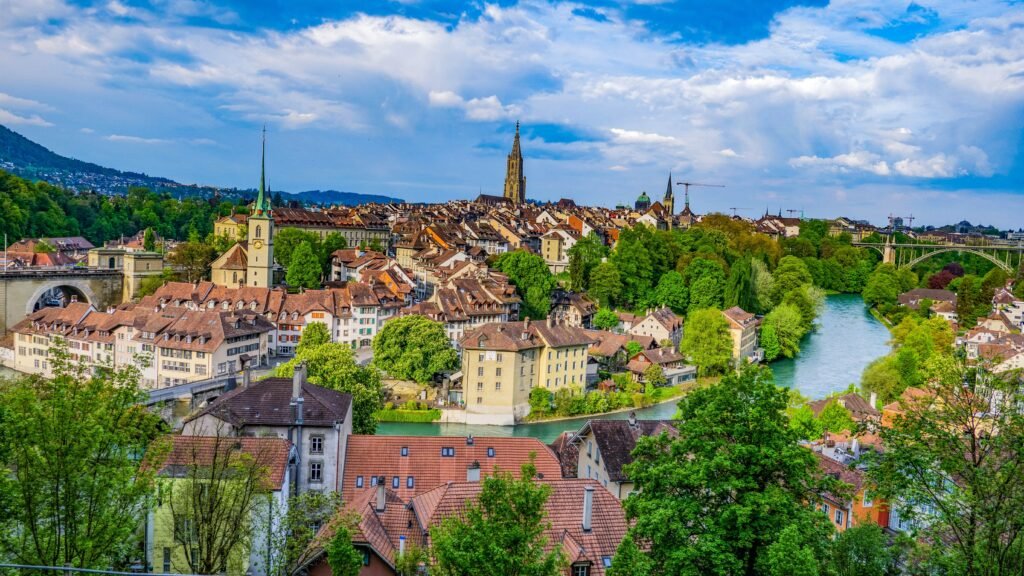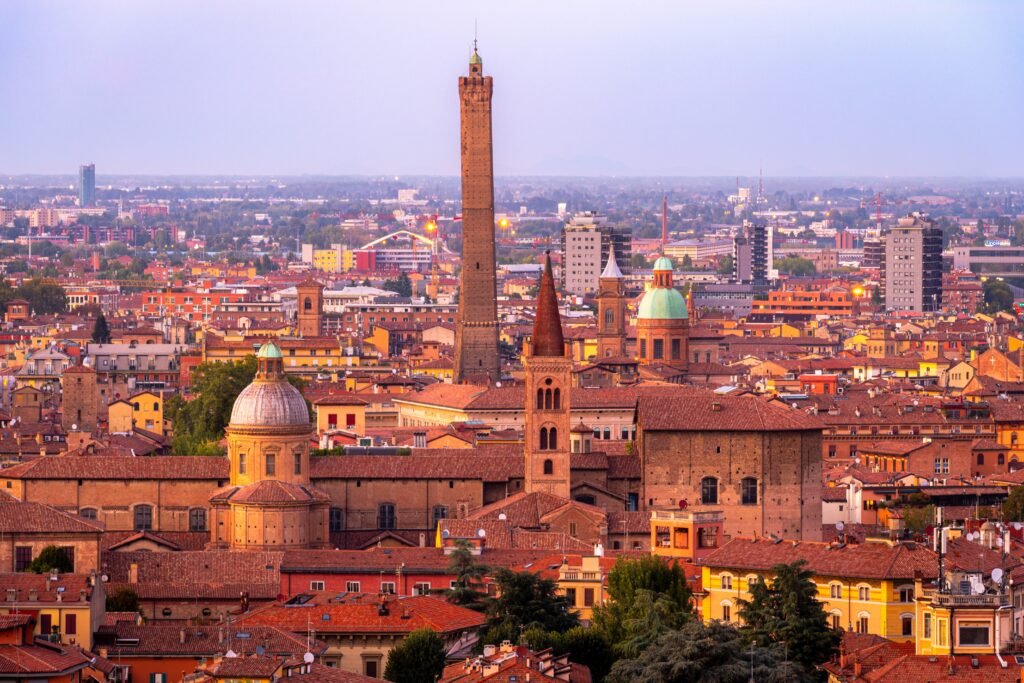Nestled amidst the lush green landscapes of Bali, the enchanting town of Ubud beckons travelers with its rich cultural heritage, serene beauty, and vibrant arts scene. From ancient temples to emerald rice terraces, Ubud offers a sensory feast that captivates the soul. Are you planning a trip to Bali ? Check here for flights. Here are 14 compelling reasons why Ubud should be at the top of your travel list.
Table of Contents
Cultural Abundance
The cultural abundance of Ubud, Bali, is one of its most captivating aspects, drawing travelers from all over the world to immerse themselves in the island’s rich heritage. Here’s a deeper look into the cultural experiences you can enjoy in Ubud:
Traditional Arts and Crafts: Ubud is renowned for its traditional arts and crafts scene. The town is dotted with galleries, workshops, and studios where you can witness local artisans at work. From intricate wood carvings to mesmerizing paintings, you can appreciate the skill and dedication that goes into each piece.
Balinese Dance Performances: Balinese dance is an integral part of the island’s culture, and Ubud is the perfect place to witness these mesmerizing performances. The town hosts regular dance shows that showcase various styles, each with its own narrative and significance. The Barong dance and Legong dance are among the most popular.
Ceremonies and Festivals: Ubud is alive with a calendar full of vibrant ceremonies and festivals. The Balinese Hindu calendar is filled with rituals, and you might have the chance to witness colorful processions, temple ceremonies, and unique festivals that provide insight into the island’s spiritual life.

Traditional Music: Alongside dance, traditional Balinese music plays a significant role in cultural expression. Gamelan orchestras, consisting of traditional instruments like metallophones and drums, create enchanting melodies that accompany dance performances and ceremonies.
Art Galleries and Museums: Ubud boasts a variety of art galleries and museums that celebrate both traditional and contemporary Balinese art. The Agung Rai Museum of Art (ARMA) and the Neka Art Museum are two prominent institutions where you can explore a diverse collection of Balinese artworks.
Batik and Textile Workshops: Balinese textiles are intricately designed and hold deep cultural significance. Participating in a batik or textile workshop in Ubud allows you to learn about the dyeing and weaving techniques that have been passed down through generations.
Cultural Workshops: Many cultural centers and organizations in Ubud offer workshops where you can learn traditional Balinese skills. These workshops cover topics like dance, cooking, music, and even traditional offerings.
Ubud Writers and Readers Festival: This annual literary event brings together writers, poets, and intellectuals from around the world to engage in discussions, workshops, and performances. It’s a celebration of literature, ideas, and cross-cultural dialogue.
Temples and Rituals: Ubud is dotted with temples of various sizes, each playing a vital role in the community’s spiritual life. Attending a temple ceremony allows you to witness the intricate rituals, colorful offerings, and heartfelt devotion that define Balinese Hinduism.
Cultural Tours: Guided cultural tours in Ubud provide a deeper understanding of the town’s heritage. These tours often include visits to temples, traditional villages, and cultural sites, accompanied by knowledgeable guides who share insights into Balinese customs and beliefs.
In Ubud, the cultural tapestry is woven into the very fabric of daily life, creating an atmosphere where tradition is cherished and celebrated. By immersing yourself in these cultural experiences, you’ll gain a profound appreciation for the depth and beauty of Balinese culture.

Ubud Monkey Fores
The Ubud Monkey Forest, also known as the Sacred Monkey Forest Sanctuary, is a must-visit destination in Ubud, Bali. It’s a unique and enchanting natural and cultural site that offers a close-up encounter with Balinese long-tailed macaques and a lush forest environment. Here’s more information about this fascinating attraction:
Location and Setting: The Ubud Monkey Forest is located in the heart of Ubud, making it easily accessible to both tourists and locals. The sanctuary is spread over approximately 27 acres of lush tropical forest, providing a serene and picturesque setting.
Natural Beauty: The sanctuary is not only a home to hundreds of macaques but also boasts diverse plant species, ancient trees, and flowing streams. The dense foliage and towering trees create a cool and refreshing atmosphere, making it a pleasant escape from Bali’s tropical heat.
Macaque Population: The highlight of the Monkey Forest is, of course, the playful and curious long-tailed macaques. These monkeys are accustomed to human presence and are known to interact with visitors. While they might seem friendly, it’s important to remember that they are wild animals and should be treated with caution and respect.

Temple Complexes: Within the Monkey Forest, you’ll find several ancient Hindu temple complexes that hold cultural and spiritual significance for the local community. Pura Dalem Agung Padangtegal is a notable temple within the sanctuary, adorned with intricate carvings and statues. The combination of the temples and the monkeys creates a unique blend of natural and cultural experiences.
Conservation Efforts: The sanctuary is not only a tourist attraction but also plays a role in conservation and research. It aims to protect the macaques’ natural habitat, promote biodiversity, and educate visitors about the importance of these animals in Balinese culture and ecology.
Monkey Interactions: Visitors have the opportunity to observe the macaques in their natural habitat, climbing trees, grooming each other, and occasionally displaying their playful antics. However, it’s important to follow the guidelines provided by the sanctuary to ensure your safety and the well-being of the animals. Feeding the monkeys is prohibited, as it can disrupt their natural behavior and lead to dependency on human food.
Guided Tours: The sanctuary offers guided tours led by knowledgeable staff members who provide insights into the macaques’ behavior, the forest’s ecology, and the cultural significance of the temple complexes. These tours enhance your understanding of the site and its importance.
Visitor Experience: Exploring the Ubud Monkey Forest can be an unforgettable experience. From observing the monkeys’ social interactions to marveling at the ancient temples surrounded by the vibrant forest, the sanctuary offers a unique blend of nature, culture, and wildlife.
Tips for Visitors:
- Respect the monkeys’ space and avoid direct eye contact or sudden movements.
- Keep a safe distance from mothers with infants.
- Do not bring food or plastic bags into the sanctuary.
- Follow the rules and guidelines provided by the sanctuary staff.
Overall, the Ubud Monkey Forest offers a magical blend of nature and culture, allowing visitors to connect with Bali’s wildlife and spiritual heritage in a truly immersive way.
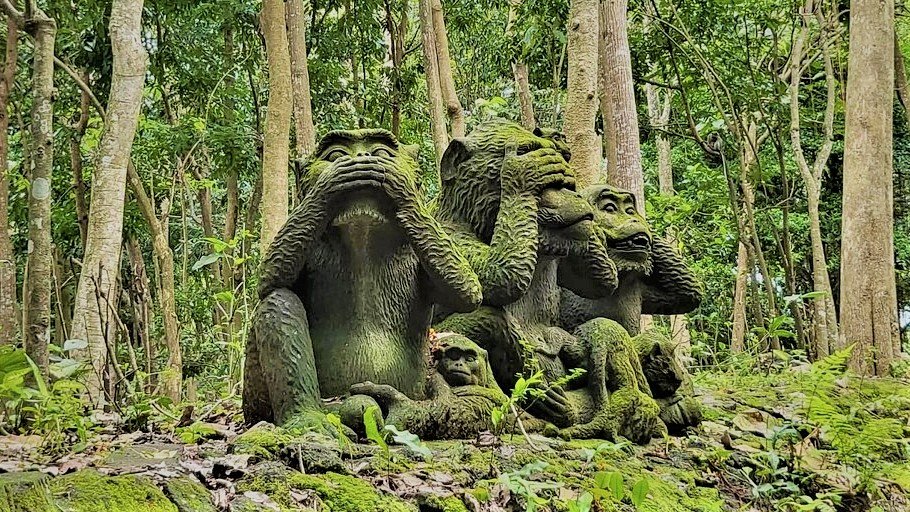
Tegallalang Rice Terraces
The Tegallalang Rice Terraces are among the most iconic and breathtaking landscapes in Ubud, Bali. These emerald-green terraces are a testament to the island’s intricate agricultural practices and stunning natural beauty. Here’s a closer look at the Tegallalang Rice Terraces:
Location and Access: The Tegallalang Rice Terraces are situated about 20-30 minutes north of Ubud town center. The terraces are easily accessible by car or motorbike, and many organized tours include a stop at this mesmerizing site. As you approach the terraces, you’ll be greeted by the sight of layered rice paddies that stretch across the rolling hills.
Agricultural Heritage: The rice terraces of Tegallalang have been shaped over centuries by generations of Balinese farmers. The subak irrigation system, which involves cooperative water management among neighboring farmers, is responsible for the lush and productive fields. This ancient system is recognized as a UNESCO World Heritage cultural landscape, highlighting its significance to both agriculture and culture.
Spectacular Views: The terraces offer panoramic views that are truly a feast for the eyes. The layered paddies create intricate patterns that change with the seasons. The vibrant green hues of the rice fields contrast beautifully with the blue skies, making the terraces a popular spot for photography and sightseeing.

Photo Opportunities: For photographers and nature enthusiasts, the Tegallalang Rice Terraces are a dream come true. The interplay of light and shadow, the reflections in the irrigation channels, and the gentle swaying of the rice plants make for stunning compositions at any time of the day.
Local Culture and Crafts: As you explore the terraces, you might come across local farmers tending to their fields. Many of them are more than happy to share insights into their traditional farming methods and way of life. You can also find roadside stalls and small shops selling Balinese handicrafts, souvenirs, and artwork.
Rice Terrace Walks: Visitors have the opportunity to take leisurely walks through the terraces, allowing you to immerse yourself in the natural beauty and tranquility of the landscape. Walking along the narrow pathways between the rice paddies offers a unique perspective and a chance to appreciate the intricate details up close.

Cafes and Restaurants: Several cafes and restaurants are strategically located along the terraces, offering visitors a chance to enjoy a meal or a refreshing drink while soaking in the breathtaking views. These spots often provide shaded seating areas where you can relax and unwind.
Conservation Efforts: In recent years, there has been an increasing awareness of the need to balance tourism with conservation. Some areas of the terraces have been restored to maintain their authenticity and prevent overdevelopment.
Best Time to Visit: The terraces are at their greenest and most vibrant during the rainy season (typically from November to March). However, visiting during the drier months also offers unique photo opportunities when the fields transition from lush green to golden yellow during the harvest.
The Tegallalang Rice Terraces are a testament to the harmonious relationship between human ingenuity and the natural world. As you stand amidst the terraced fields, you’ll gain a profound appreciation for the farmers’ dedication and the stunning landscapes that define Bali’s rural beauty.
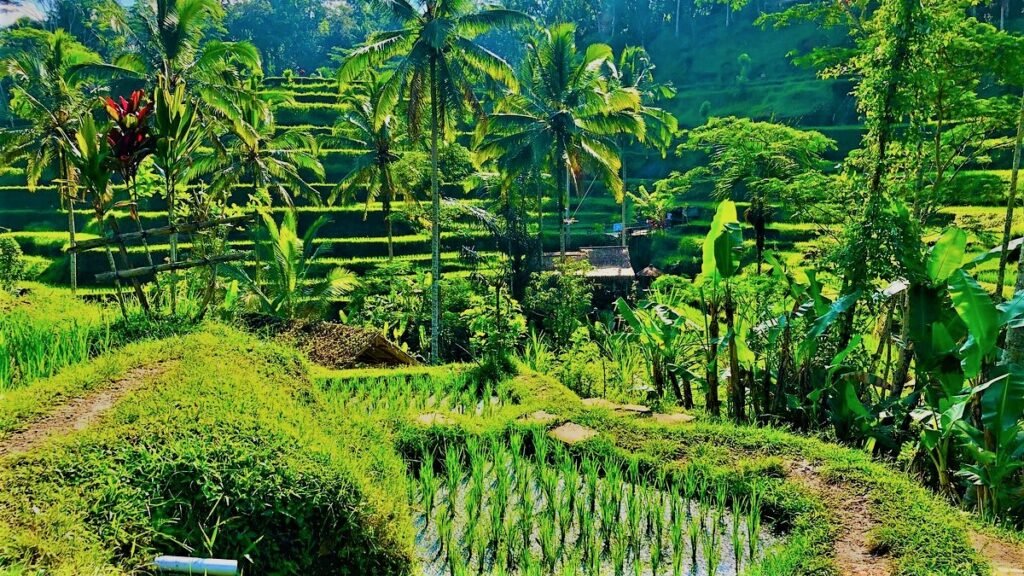
Spiritual Retreats
Ubud, Bali, has earned a reputation as a spiritual haven, attracting travelers seeking inner peace, self-discovery, and holistic well-being. The town’s serene environment, lush surroundings, and rich cultural heritage make it an ideal destination for spiritual retreats. Here’s a deeper look into what Ubud offers in terms of spiritual retreats:
Yoga Retreats: Ubud is renowned for its numerous yoga studios and retreat centers that offer a variety of yoga styles, from Hatha and Vinyasa to Yin and Kundalini. These retreats often include daily yoga classes, meditation sessions, pranayama (breathing exercises), and workshops that cater to practitioners of all levels.
Meditation Retreats: Meditation retreats in Ubud provide a tranquil space to deepen your meditation practice and connect with your inner self. Experienced instructors guide participants through various meditation techniques, helping you find stillness and mindfulness amidst the lush surroundings.
Holistic Healing: Many retreat centers in Ubud offer holistic healing therapies that combine traditional Balinese practices with modern wellness techniques. These might include Balinese massage, sound healing, Reiki, crystal therapy, and energy healing sessions.
Ayurveda Retreats: Ubud’s serene environment provides an excellent backdrop for Ayurvedic retreats. Participants can experience Ayurvedic consultations, personalized wellness programs, traditional massages, and Ayurvedic cuisine tailored to their dosha (energetic constitution).
Detox and Cleanse Retreats: For those seeking to rejuvenate and cleanse their bodies, Ubud offers detox and cleanse retreats that combine nutritious meals, fasting, herbal therapies, and holistic practices to support the body’s natural detoxification processes.
Silent Retreats: Silent retreats in Ubud provide a unique opportunity to disconnect from the outside world and cultivate inner silence and awareness. These retreats often include guided meditation, mindfulness practices, and moments of self-reflection.
Spiritual Workshops: Ubud hosts a wide range of workshops led by spiritual teachers, healers, and practitioners from various traditions. These workshops might cover topics such as mindfulness, personal growth, chakra balancing, and connecting with your intuition.

Balinese Ceremonies and Rituals: Immersing yourself in the local culture can also be a deeply spiritual experience. Many retreats offer the chance to participate in traditional Balinese ceremonies and rituals, allowing you to gain insight into the island’s spiritual traditions.
Natural Setting: The lush surroundings of Ubud, with its rice terraces, flowing rivers, and serene landscapes, provide an ideal environment for introspection, relaxation, and connecting with nature. The tranquil ambiance enhances the retreat experience, making it easier to delve into your spiritual journey.
Cultural Integration: Ubud’s deep connection to Balinese culture and spirituality provides a unique opportunity to learn from the locals and integrate their practices into your retreat experience. Engaging with local customs and traditions can enrich your spiritual journey.
Whether you’re a seasoned spiritual practitioner or someone looking to explore mindfulness and self-care, Ubud’s diverse range of retreat options ensures that you’ll find a program that resonates with your personal goals and aspirations. With its nurturing environment and spiritual energy, Ubud invites you to embark on a transformative journey of self-discovery and inner growth.

Ubud Traditional Market
The Ubud Traditional Market, also known as Pasar Ubud or Ubud Market, is a vibrant and bustling marketplace located in the heart of Ubud, Bali. This market is a hub of local culture, offering a wide array of traditional Balinese goods, from handicrafts and textiles to fresh produce and souvenirs. Here’s more information about this lively market:
Location and Atmosphere: The Ubud Traditional Market is situated in the central part of Ubud, making it easily accessible to both tourists and locals. The market is divided into two main sections: the west market, where you can find fresh produce and daily necessities, and the east market, which is more dedicated to handicrafts, textiles, and souvenirs.
Shopping Experience: Visiting the Ubud Market is a sensory experience that immerses you in Balinese culture. As you wander through the market’s maze-like alleys, you’ll encounter a colorful array of stalls offering everything from handcrafted jewelry and batik textiles to wood carvings, paintings, and traditional masks.
Handicrafts and Souvenirs: The market is a treasure trove for those seeking unique Balinese souvenirs and gifts. You can find intricately carved wooden sculptures, handwoven baskets, batik clothing, silver jewelry, traditional masks, and more. These items reflect the island’s rich artistic heritage and make for wonderful mementos of your visit.
Haggling and Bargaining: Haggling is a common practice at the Ubud Traditional Market. Bargaining is expected, and it can be a fun and interactive part of the shopping experience. Keep in mind that while negotiating the price, maintaining a friendly and respectful attitude is important.
Local Food and Spices: The market’s west section offers a variety of fresh produce, including tropical fruits, vegetables, herbs, and spices. This is where locals shop for their daily cooking needs. It’s a great place to explore the vibrant colors and aromatic scents of Bali’s local ingredients.
Opening Hours: The market is open daily, typically from early morning until late afternoon. It’s best to visit in the morning when the market is at its busiest and the selection of fresh produce is at its freshest.

Getting There: The Ubud Market is located within walking distance from most parts of Ubud town center. If you’re staying in the surrounding area, it’s easy to reach the market on foot. Taxis and rented scooters are also common modes of transportation for reaching the market.
Cultural Interaction: Visiting the Ubud Traditional Market is not only about shopping but also about interacting with the local vendors and experiencing the vibrant atmosphere. Engaging in friendly conversations with the sellers can provide insights into their way of life and their passion for their crafts.
Supporting Local Artisans: By shopping at the Ubud Market, you’re directly supporting local artisans and the Balinese economy. Many of the items for sale are handmade by skilled craftsmen and women from neighboring villages.
The Ubud Traditional Market is more than just a shopping destination; it’s an opportunity to connect with the heart of Balinese commerce and culture. Whether you’re looking for unique souvenirs, exploring local flavors, or simply immersing yourself in the lively atmosphere, a visit to this market is an essential part of experiencing Ubud’s vibrant spirit.
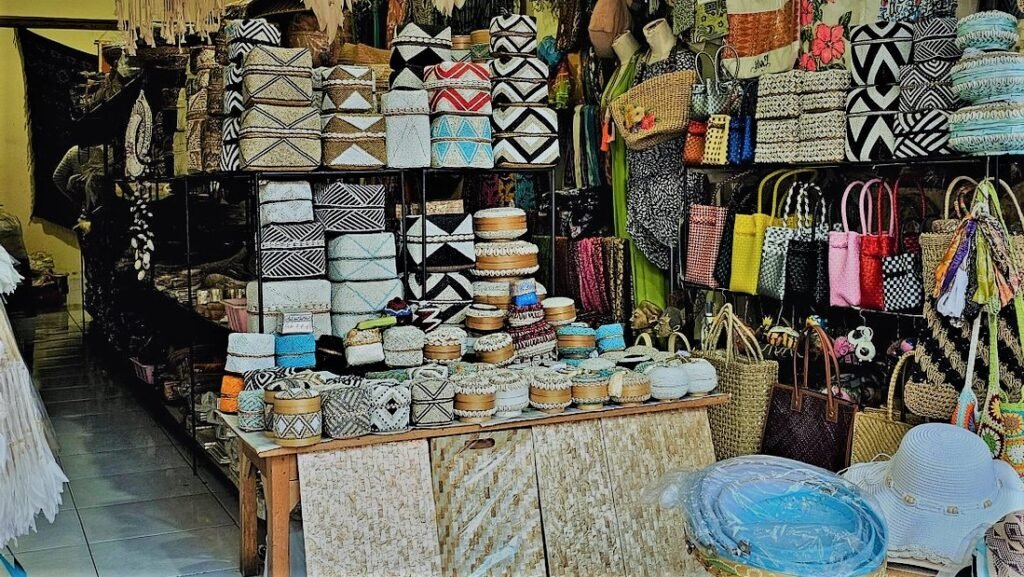
Ubud Royal Palace
The Ubud Royal Palace, also known as Puri Saren Agung Ubud, is a historical and cultural landmark located in the heart of Ubud, Bali. This palace holds significant historical and cultural importance, as it was once the residence of the royal family and remains a center of traditional arts and performances. Here’s a closer look at the Ubud Royal Palace:
Historical Significance: Built in the 19th century during the reign of Tjokorda Putu Kandel, the Ubud Royal Palace served as the official residence of the royal family of Ubud. The palace showcases traditional Balinese architecture, characterized by intricate carvings, ornate gates, and beautifully landscaped gardens.
Architecture and Design: The palace complex features a blend of traditional Balinese and Javanese architectural styles. Elaborate wooden carvings, stone sculptures, and ornate doorways adorn the buildings. The main audience hall, Bale Agung, is particularly impressive with its high ceilings, detailed carvings, and spacious courtyard.
Cultural Performances: The Ubud Royal Palace is not just a historical site but also a hub of cultural activities. Every evening, the palace hosts traditional Balinese dance performances in its open-air courtyard. These performances showcase classic dance forms like Legong, Barong, and Kris Dance, providing visitors with an opportunity to witness the rich artistic heritage of Bali.
Royal Family Heritage: While the Ubud Royal Palace is no longer the official residence of the royal family, it still holds a place of honor in Ubud’s cultural landscape. The palace is a symbol of the town’s royal heritage and the historical connection between the monarchy and the community.
Public Space: The palace complex is open to the public, allowing visitors to explore its courtyards, gardens, and pavilions. The serene ambiance and architectural details offer a glimpse into the grandeur of Bali’s royal past.
Ubud Market Adjacency: The Ubud Royal Palace is conveniently located near the Ubud Traditional Market. Many visitors choose to explore both attractions in a single outing, immersing themselves in both historical and cultural experiences.
Photography Opportunities: The palace’s intricate architecture and well-maintained grounds make it a popular spot for photography. The ornate details, lush gardens, and traditional Balinese elements create a picturesque backdrop for capturing memorable moments.
Cultural and Artistic Hub: The palace has played a pivotal role in fostering the growth of Ubud’s arts scene. The royal family’s patronage has encouraged the development of traditional arts, including dance, music, painting, and craftsmanship.
Respecting Local Customs: When visiting the Ubud Royal Palace, it’s important to show respect for the site’s cultural and historical significance. Modest attire is recommended, and visitors should behave respectfully during dance performances and while exploring the palace grounds.
The Ubud Royal Palace serves as a testament to Bali’s rich heritage and offers a unique blend of history, architecture, and cultural experiences. Exploring the palace and witnessing the traditional performances provide a deeper understanding of Ubud’s artistic and royal legacy.

Sacred Temples
Ubud, Bali, is home to several sacred temples that hold immense spiritual and cultural significance within the local community. These temples offer a glimpse into Bali’s deep-rooted religious practices and architectural heritage. Here are a few of the notable sacred temples in and around Ubud:
Goa Gajah (Elephant Cave): Goa Gajah is an ancient archaeological site located just a short drive from central Ubud. The temple is renowned for its entrance carved in the shape of a demon’s mouth, leading to a cave that houses a statue of Ganesha, the elephant-headed Hindu deity. The site also features bathing pools and stone carvings depicting scenes from Hindu mythology.
Pura Taman Saraswati: Located in central Ubud, Pura Taman Saraswati is dedicated to the goddess Saraswati, who is revered as the deity of knowledge, arts, and wisdom. The temple is known for its beautiful lotus pond, which is surrounded by intricate stone carvings and lush gardens. Traditional dance performances often take place at the temple’s open stage in the evenings.

Pura Dalem Agung Padangtegal (Monkey Forest Temple): Situated within the Ubud Monkey Forest, this temple is a significant spiritual site for the local community. It’s dedicated to Lord Shiva, the destroyer deity in Hinduism. The temple’s unique architecture and serene surroundings make it a tranquil spot for meditation and reflection.
Pura Gunung Lebah: This temple, perched on a hill overlooking the lush Campuhan Ridge, is dedicated to the god of wealth, Dewi Sri. Pura Gunung Lebah is characterized by its intricate stone carvings and ornate entrance gate. The temple’s location offers breathtaking panoramic views of the surrounding landscape.
Pura Dalem Ubud: Also known as Pura Dalem Agung, this temple is situated near the Ubud Royal Palace and is dedicated to Lord Shiva. It’s often used for important religious ceremonies and rituals. The temple’s towering split gate and ornate architecture make it an impressive sight.
Pura Kebo Edan (Petulu Temple): Located in the village of Petulu, just outside Ubud, this temple is dedicated to the deity believed to protect against madness and possession. The village is known for its unique tradition of having thousands of white herons and egrets gather in the area during sunset, creating a mesmerizing spectacle.
Respectful Attire and Behavior: When visiting sacred temples in Ubud, it’s important to dress modestly as a sign of respect. Wear a sarong and sash, which are often provided or available for rent at the entrance of the temples. Avoid wearing revealing clothing and be mindful of your behavior, especially during ceremonies and prayer times.
Exploring these sacred temples in Ubud offers a profound insight into the spirituality and cultural traditions that form the backbone of Balinese life. Whether you’re admiring the intricate architecture, participating in a ceremony, or simply enjoying the serene surroundings, these temples provide a deeper connection to the spiritual heart of Bali.
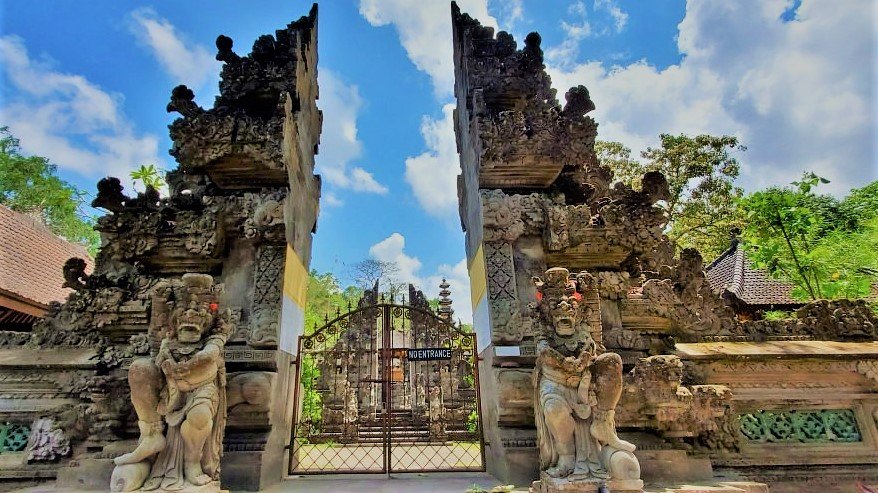
Culinary Delights
Ubud, Bali, is not only known for its natural beauty and cultural experiences but also for its vibrant culinary scene. The town offers a diverse range of dining options that cater to different tastes and preferences. Here’s a closer look at the culinary delights you can experience in Ubud:
Balinese Cuisine: Exploring Balinese cuisine is a must when visiting Ubud. Traditional dishes are often prepared using local ingredients such as rice, coconut, spices, and fresh seafood. Try dishes like Nasi Campur (mixed rice), Babi Guling (suckling pig), and Bebek Betutu (slow-cooked duck).
Warungs: Warungs are local eateries that offer authentic Balinese flavors at affordable prices. These establishments often serve dishes like Nasi Goreng (fried rice), Mie Goreng (fried noodles), and a variety of local specialties. Warungs provide an opportunity to savor traditional flavors in a casual setting.

Farm-to-Table Dining: Ubud’s lush surroundings have led to the emergence of farm-to-table dining experiences. Many restaurants source their ingredients locally, offering fresh and organic meals. These establishments often provide a serene atmosphere, allowing you to enjoy your meal amidst nature.
Vegetarian and Vegan Options: Ubud has become a haven for vegetarians and vegans, with numerous restaurants and cafes offering plant-based menus. These establishments showcase innovative and flavorful dishes made from a variety of fruits, vegetables, grains, and plant-based proteins.
Fine Dining: For those seeking a more upscale dining experience, Ubud boasts a selection of fine dining restaurants. These establishments often offer fusion cuisine that combines Balinese flavors with international influences. The elegant ambiance and creative presentations enhance the dining experience.
Cooking Classes: Engage with Balinese cuisine on a deeper level by participating in a cooking class. Many local cooking schools offer hands-on experiences where you can learn to prepare traditional dishes under the guidance of skilled chefs. It’s a wonderful way to take a piece of Ubud’s culinary culture back home with you.
Local Markets and Street Food: Exploring local markets in Ubud, such as the Ubud Traditional Market, offers the opportunity to sample street food and traditional snacks. From crispy fried tempeh to traditional sweets, the market stalls are filled with flavorful delights that are popular among locals.

Healthy and Wellness Eateries: Ubud’s wellness-focused atmosphere has given rise to health-conscious cafes and eateries. These places offer a range of nutritious options, including fresh salads, smoothie bowls, cold-pressed juices, and raw desserts.
Coffee Culture: Ubud has a thriving coffee scene, with numerous cafes serving locally sourced coffee beans and expertly crafted brews. Enjoying a cup of Balinese coffee while overlooking lush rice terraces is a quintessential Ubud experience.
Balinese Sweets: Indulge in Balinese sweets like Klepon (green rice cakes filled with palm sugar), Dadar Gulung (green crepes with coconut and palm sugar), and Pisang Rai (banana wrapped in rice flour and coconut).
Ubud’s culinary landscape is as diverse as its cultural offerings, allowing visitors to embark on a delightful gastronomic journey. Whether you’re a food enthusiast seeking authentic Balinese flavors or a health-conscious traveler looking for nourishing options, Ubud’s culinary scene has something for everyone.
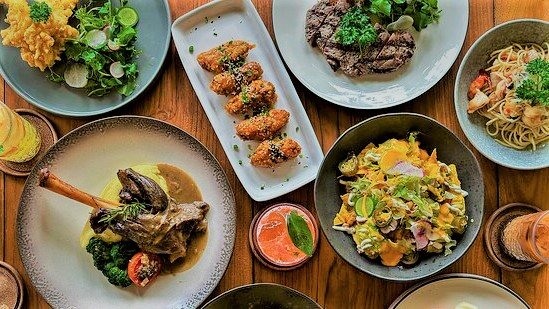
Artistic Heritage
Ubud, Bali, has long been a hub of artistic expression and creativity, attracting artists, craftsmen, and artisans from all corners of the world. The town’s artistic heritage is deeply intertwined with its culture, history, and natural beauty. Here’s a closer look at the artistic heritage of Ubud:
Traditional Art Forms: Ubud is renowned for its traditional art forms, including painting, sculpture, wood carving, stone carving, and textile weaving. These art forms have been passed down through generations, preserving the rich cultural heritage of Bali.
Painting: Ubud is particularly famous for its painting traditions. The Ubud style of painting emerged in the early 20th century and is characterized by intricate details, vibrant colors, and depictions of daily life, mythological stories, and nature. Ubud’s art galleries showcase a wide range of traditional and contemporary paintings.
Wood Carving and Sculpture: Ubud’s wood carvers and sculptors are known for their exceptional craftsmanship. Intricate carvings often adorn temples, palaces, and traditional structures. Wood carvings can depict mythological figures, scenes from Hindu epics, and intricate geometric patterns.
Stone Carving: Stone carving is another revered art form in Ubud. Skilled artisans transform rough stones into intricate sculptures, often depicting deities, animals, and mythological creatures. The stone carvings are commonly used in temples and cultural sites.
Textile Weaving: Balinese textiles are highly regarded for their intricate designs and vibrant colors. Traditional weaving techniques are used to create textiles like ikat and batik. These textiles often play a significant role in ceremonies, rituals, and daily life.
Jewelry and Metalwork: Ubud’s jewelry makers and metalworkers produce exquisite pieces inspired by Balinese culture and nature. Silver and gold are often used to craft intricate jewelry, from intricate necklaces to delicate earrings.
Cultural Influences: Ubud’s artistic heritage is deeply rooted in Balinese Hindu culture and spirituality. Many artworks depict scenes from Hindu epics, Balinese ceremonies, and the island’s natural environment. Art often serves as a form of devotion and expression of Balinese beliefs.

Art Galleries and Studios: Ubud is home to numerous art galleries, studios, and workshops that provide a platform for local and international artists to showcase their work. The town’s vibrant arts scene attracts visitors and collectors from around the world.
Ubud Writers and Readers Festival: This annual literary event brings together writers, poets, and intellectuals from various disciplines to engage in discussions, workshops, and performances. The festival celebrates literature, ideas, and cross-cultural dialogue.
Cultural Workshops: Many cultural centers and organizations in Ubud offer workshops where visitors can learn traditional Balinese arts and crafts. These workshops provide hands-on experiences in painting, wood carving, dance, music, and more.
Art as a Way of Life: In Ubud, art isn’t limited to galleries; it’s integrated into daily life. Balinese homes are often adorned with carvings, textiles, and paintings, reflecting the island’s artistic heritage and creativity.
Ubud’s artistic heritage is a reflection of the town’s soul, showcasing the intricate interplay between culture, spirituality, and creativity. Whether you’re an art enthusiast or simply curious about Bali’s cultural expressions, Ubud offers a unique opportunity to immerse yourself in a world of artistic wonders.

Balinese Dance Performances
Balinese dance performances are a mesmerizing and integral part of Ubud’s cultural landscape. These performances showcase intricate choreography, vibrant costumes, and captivating storytelling that draw upon Balinese mythology, folklore, and religious traditions. Here’s a deeper look into Balinese dance performances in Ubud:
Diverse Dance Styles: Ubud offers a variety of traditional Balinese dance styles, each with its own unique characteristics and stories. Some of the most popular dance styles you might encounter include Legong, Barong, Kecak, Wayang Kulit, and Gambuh.
Legong Dance: Legong is a graceful and elegant dance performed by young girls. The dance is characterized by intricate hand movements, expressive facial expressions, and delicate footwork. It often depicts romantic stories or mythological tales.
Barong Dance: The Barong dance is a ritualistic performance that narrates the eternal battle between good (Barong, a lion-like creature) and evil (Rangda, a witch). The dynamic choreography, elaborate costumes, and dramatic storyline make it a must-see performance.
Kecak Dance: The Kecak dance is a mesmerizing vocal and rhythmic performance accompanied by a chorus of chanting men. It often retells the story of the Ramayana, an ancient Hindu epic. The dancers move in a circle, creating a hypnotic atmosphere.
Wayang Kulit: Wayang Kulit is a shadow puppet performance that combines storytelling, music, and intricate puppetry. The puppets are made of buffalo leather and are manipulated by a puppeteer behind a screen. The stories often have moral and religious themes.
Gambuh Dance: Gambuh is one of the oldest Balinese dance forms, known for its slow and graceful movements. The dance is accompanied by a traditional orchestra and typically portrays royal and courtly stories.
Cultural Significance: Balinese dance performances are not just artistic displays but also hold deep cultural and spiritual significance. Many dances are tied to religious rituals and ceremonies, serving as a form of devotion to deities and ancestors.
Elaborate Costumes and Makeup: Balinese dance costumes are richly adorned with vibrant colors, intricate patterns, and traditional textiles. Dancers wear ornate headdresses, jewelry, and detailed makeup to enhance their characters and bring the stories to life.
Audience Participation: Some Balinese dances, like the Kecak dance, involve audience participation. Visitors may be invited to participate in the rhythmic chanting or even join the dancers in a circle.

Venues and Performances: Balinese dance performances are held at various venues in Ubud, including temples, cultural centers, and theaters. Many performances are accompanied by live gamelan music, enhancing the immersive experience.
Evening Performances: Most Balinese dance performances take place in the evening, when the atmosphere is cooler and the setting adds to the ambiance. The venues are often beautifully lit, creating a magical atmosphere.
Cultural Immersion: Watching Balinese dance performances provides a unique opportunity to immerse yourself in the island’s cultural heritage. The dances encapsulate Balinese traditions, artistic expressions, and spiritual beliefs.
Experiencing a Balinese dance performance in Ubud is not only a visual treat but also a gateway to understanding the deep connections between art, spirituality, and community in Bali. The performances allow you to witness the timeless stories and artistic skills that have been cherished for generations.

Ayung River Adventures
Ayung River Adventures in Ubud, Bali, offer thrilling and immersive experiences for adventure enthusiasts and nature lovers. The Ayung River, one of Bali’s most iconic and scenic rivers, provides the backdrop for a range of exciting outdoor activities. Here’s a closer look at what Ayung River Adventures has to offer:
White Water Rafting: White water rafting on the Ayung River is a popular adventure activity that combines adrenaline-pumping rapids with stunning natural landscapes. Guided by experienced rafting professionals, you’ll navigate through Class II and III rapids, passing lush rainforests, waterfalls, and towering cliffs along the way. The river’s clear waters and diverse scenery make it an unforgettable rafting experience suitable for beginners and experienced rafters alike.
Canyoning: Canyoning involves descending through natural canyons using a combination of techniques like rappelling, sliding, and swimming. Ayung River Adventures offers canyoning experiences that allow you to explore Bali’s hidden landscapes, including waterfalls, gorges, and rock formations. This activity provides a unique way to connect with nature and challenge yourself physically.
Cycling Tours: In addition to water-based adventures, Ayung River Adventures offers cycling tours that allow you to explore the lush countryside and traditional villages surrounding Ubud. You’ll pedal through rice paddies, visit local homes, and witness the daily life of rural Balinese communities. It’s an excellent way to connect with the local culture and experience the serene beauty of the region.

Combination Packages: Many tour operators offer combination packages that allow you to experience multiple adventures in a single day. These packages often include activities like white water rafting, cycling, and visits to local villages, providing a comprehensive exploration of the area’s natural and cultural highlights.
Guides and Safety: Safety is a top priority for Ayung River Adventures. Experienced guides lead all activities, providing instructions, equipment, and ensuring that participants are well-prepared for the adventures. Safety briefings are conducted before each activity to ensure a secure and enjoyable experience.
Nature and Scenery: One of the highlights of Ayung River Adventures is the opportunity to immerse yourself in Bali’s natural beauty. The Ayung River winds through lush rainforests, terraced rice paddies, and serene landscapes, offering a chance to witness the island’s rich biodiversity up close.
Photography Opportunities: The stunning surroundings of the Ayung River provide numerous opportunities for breathtaking photographs. From the river’s rapids to the lush greenery and cascading waterfalls, the picturesque setting is ideal for capturing memorable moments.
Accessibility: Ayung River Adventures are accessible to a wide range of participants, from families with children to adventure enthusiasts. Depending on the level of activity and adventure you’re seeking, you can choose from different routes and experiences.
Participating in Ayung River Adventures allows you to experience Bali’s natural beauty in an exhilarating and engaging way. Whether you’re seeking an adrenaline rush or a peaceful immersion in nature, the adventures offered along the Ayung River provide an unforgettable and unique perspective on the island’s landscape.
Healer and Spa Experiences
Ubud, Bali, is renowned for its holistic wellness offerings, including traditional healing practices and rejuvenating spa experiences. Whether you’re seeking physical relaxation, emotional healing, or spiritual renewal, Ubud’s healer and spa experiences provide a wide range of options to cater to your well-being. Here’s a closer look at what you can expect:
Traditional Balinese Healers: Ubud is home to several traditional Balinese healers, often referred to as “Balian” or “Balians.” These healers practice ancient healing techniques that encompass physical, mental, and spiritual aspects. Visitors seeking healing often consult these practitioners for various ailments, emotional challenges, and spiritual guidance. Each healer may have their own methods, which could include herbal remedies, energy balancing, meditation, and intuitive insights.
Energy and Chakra Healing: Many healing practitioners in Ubud offer energy healing sessions that focus on balancing the body’s energy centers, or chakras. Techniques like Reiki, crystal healing, and pranic healing are used to promote relaxation, stress reduction, and overall well-being.
Spa Treatments and Wellness Centers: Ubud is home to numerous spa and wellness centers that offer a wide range of treatments to pamper your body and soothe your senses. From traditional Balinese massages to hot stone therapies and aromatherapy, these treatments are designed to relax your muscles, alleviate stress, and promote a sense of tranquility.

Holistic Wellness Retreats: Ubud hosts various wellness retreats that offer comprehensive experiences combining spa treatments, yoga, meditation, healing sessions, and workshops. These retreats provide a holistic approach to well-being, allowing you to rejuvenate your mind, body, and spirit in a supportive environment.
Ayurvedic Therapies: Ubud’s wellness centers often incorporate Ayurvedic principles into their treatments. Ayurveda, an ancient Indian system of holistic healing, focuses on balance and harmony within the body. Ayurvedic massages, treatments, and consultations are available to help you align with your unique constitution.
Natural and Organic Ingredients: Many spas and wellness centers in Ubud use natural and organic ingredients for their treatments. Traditional Balinese herbs, locally sourced oils, and indigenous plants are often incorporated to enhance the therapeutic effects of the treatments.
Cultural Elements: Spa experiences in Ubud often incorporate cultural elements to create an immersive and authentic environment. You might find treatments accompanied by Balinese rituals, blessings, and soothing traditional music.
Mindfulness and Meditation: Wellness experiences in Ubud often include mindfulness and meditation practices that help you connect with the present moment and promote inner peace. Guided meditation sessions, sound healing, and relaxation techniques are commonly offered.
Natural Surroundings: Ubud’s lush landscapes provide an ideal backdrop for healing and relaxation. Many spas and wellness centers are nestled within nature, offering serene and tranquil settings that enhance the overall experience.
Ubud’s healer and spa experiences offer a holistic approach to well-being, allowing you to explore traditional healing practices, indulge in rejuvenating treatments, and connect with the island’s spiritual and natural essence. Whether you’re seeking physical relief, emotional healing, or a spiritual journey, Ubud provides a nurturing environment to support your wellness goals.

Campuhan Ridge Walk
The Campuhan Ridge Walk is a popular and scenic trail located in Ubud, Bali. It offers a peaceful escape from the bustling town, allowing visitors to immerse themselves in the natural beauty of the area. Here’s a closer look at the Campuhan Ridge Walk:
Location and Access: The Campuhan Ridge Walk starts near the Campuhan Bridge, which is easily accessible from central Ubud. The starting point is just a short walk from the town center, making it a convenient activity for visitors staying in Ubud.
Scenic Trail: The trail follows the ridgeline between two lush valleys, offering breathtaking panoramic views of the surrounding landscapes. As you walk, you’ll be treated to vistas of rice terraces, coconut palms, lush vegetation, and the flowing Wos River below.
Natural Beauty: The Campuhan Ridge Walk is known for its serene ambiance and untouched beauty. The trail is lined with vibrant greenery, and the gentle breeze carries the scent of tropical flowers and plants, creating a soothing environment.
Peaceful Atmosphere: The trail’s tranquility and proximity to nature provide a serene escape from the busyness of Ubud. Many visitors appreciate the peacefulness of the walk, making it a great place for relaxation, meditation, or simply enjoying the views.
Photography Opportunities: The Campuhan Ridge Walk is a photographer’s paradise. The changing light throughout the day casts different hues on the landscape, providing ample opportunities to capture stunning shots of the rice terraces, rolling hills, and open skies.
Cultural and Spiritual Significance: The ridge area holds cultural and spiritual significance for the Balinese people. Along the trail, you might come across small shrines and offerings, highlighting the island’s deep connection between nature and spirituality.
Sunrise and Sunset Views: The Campuhan Ridge Walk is especially popular during sunrise and sunset. Watching the sun rise over the lush valleys or set behind the rice fields creates a magical experience that’s not to be missed.
Walking Distance and Duration: The trail itself is approximately 2 kilometers (1.2 miles) long, one way. The walk takes about 1 to 1.5 hours at a leisurely pace, depending on stops and photography breaks.

Footwear and Attire: Wear comfortable walking shoes or sandals with good grip, as some parts of the trail can be a bit uneven. It’s also advisable to wear a hat, sunscreen, and comfortable clothing suitable for the tropical climate.
Cafes and Rest Stops: Along the trail, you’ll find small cafes and rest stops where you can take a break, enjoy a refreshing drink, and soak in the views. These spots provide a chance to relax and appreciate the natural surroundings.
The Campuhan Ridge Walk offers a simple yet profound experience that allows you to reconnect with nature, clear your mind, and enjoy the beauty of Bali’s landscapes. Whether you’re an avid hiker, a photography enthusiast, or someone seeking a tranquil escape, this scenic trail is a must-visit destination in Ubud.
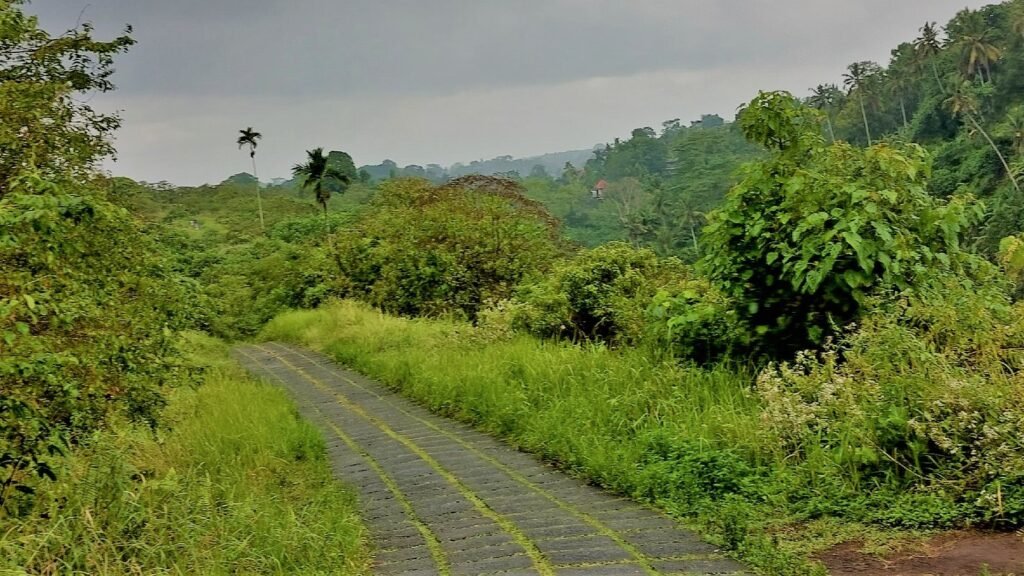
Balinese Cooking Classes
Balinese cooking classes in Ubud offer a delightful opportunity to dive into the island’s culinary traditions, learn about local ingredients, and discover the secrets behind some of Bali’s most iconic dishes. Here’s a closer look at what you can expect from Balinese cooking classes in Ubud:
Hands-On Experience: Balinese cooking classes are typically hands-on, allowing you to actively participate in the cooking process. You’ll have the chance to prepare traditional dishes under the guidance of experienced chefs or local home cooks.
Market Visits: Many cooking classes in Ubud begin with a visit to the local market, where you’ll learn about the diverse range of ingredients used in Balinese cuisine. Your instructor might explain the different types of spices, vegetables, herbs, and tropical fruits that are integral to the island’s flavors.
Traditional Recipes: During the class, you’ll be introduced to authentic Balinese recipes that have been passed down through generations. You might learn to prepare dishes like Nasi Goreng (fried rice), Lawar (minced meat and vegetables), Babi Guling (suckling pig), and Pepes (steamed fish in banana leaves).

Techniques and Methods: Cooking classes provide insights into the cooking techniques and methods unique to Balinese cuisine. You’ll learn how to grind spices, prepare Balinese sauces, and create the intricate flavors that define the dishes.
Local Ingredients: One of the highlights of Balinese cooking classes is the emphasis on using fresh and local ingredients. You might get the chance to pick herbs from a garden or use ingredients sourced directly from nearby markets.
Cultural Insights: Cooking classes often go beyond recipes and techniques, providing cultural context for the dishes you’re preparing. Instructors might share stories about the significance of certain dishes in Balinese ceremonies and daily life.
Variety of Classes: Ubud offers a range of cooking classes to suit different preferences. Some classes focus solely on Balinese cuisine, while others offer a broader Indonesian culinary experience. You might also find classes that teach you how to prepare traditional snacks, desserts, or vegan and vegetarian dishes.
Dining and Sharing: After the cooking session, you’ll have the chance to savor the dishes you’ve prepared. Enjoying a meal together with your fellow participants and instructors fosters a sense of community and connection.
Skill Levels: Balinese cooking classes are suitable for all skill levels, from beginners to experienced cooks. Whether you’re a food enthusiast looking to expand your culinary repertoire or a traveler seeking a memorable experience, these classes cater to a wide range of participants.
Take-Home Recipes: Most cooking classes provide participants with recipe cards or booklets so you can recreate the dishes at home and share the flavors of Bali with your friends and family.
Family and Group Experiences: Cooking classes are often suitable for families, couples, and groups of friends. Participating in a cooking class can be a fun and engaging way to bond with your travel companions.
Balinese cooking classes in Ubud offer not only a chance to learn how to prepare delicious meals but also an immersive experience into the heart of the island’s culture and culinary heritage. It’s a wonderful way to take a piece of Bali back home with you and continue to enjoy its flavors long after your trip.
Ubud’s charm lies in its ability to transport you into a world where tradition and nature intertwine seamlessly. With its rich culture, stunning landscapes, and diverse experiences, Ubud beckons travelers to delve into the heart of Bali’s beauty and spirituality. Whether you seek cultural immersion, spiritual awakening, or simply a serene retreat, Ubud promises an unforgettable journey that will forever resonate in your heart. To travel safely, you need travel insurance.
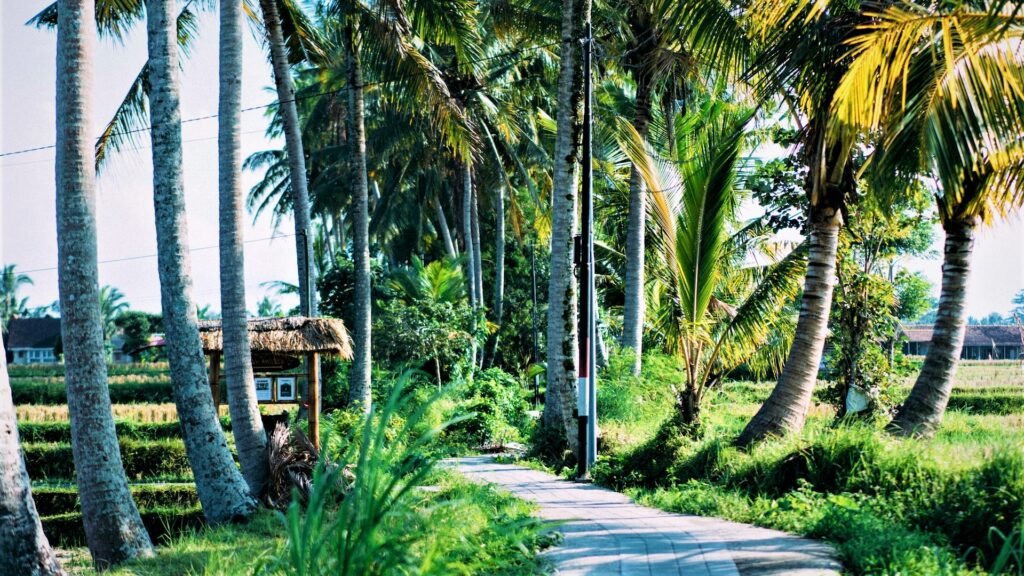
For our other blogs, see here.

